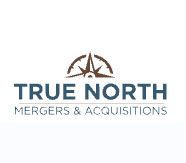How to Identify the Right Targets for Acquisition

True North Mergers & Acquisitions
February 26, 2025

Navigating the acquisition landscape requires a controlled and organized approach, particularly when evaluating potential targets to focus your efforts on. Success in this area often lies in a well-crafted strategy, clear intentions, and an emphasis on long-term alignment of the acquiring and target company. This thorough preparation ensures that only serious, qualified candidates are invited to the table. Such diligence not only protects the selling company’s interests but also safeguards the integrity and confidentiality of the QuietAuction(™) process.
If you want to grow your business by acquiring another one, this blog tackles key ways to identify potential acquisition targets.
Evaluate Financials
A key question you should ask yourself when identifying mergers and acquisitions targets is "Does the target strengthen my portfolio?"
Identifying how a potential target may strengthen your portfolio is crucial as you want every acquisition to fortify your financial position, not damage it. Therefore, it is essential to conduct a comprehensive financial analysis that assesses the target's profit margins, debts, cash flow, and revenue consistency. Specifically, look for:
- Growth potential: Can the target scale without excessive capital investment?
- Strong balance sheet: A solid sheet indicates resilience, especially when markets have been shifting.
- Sustainable EBITDA performance: Reliable Earnings Before Interest, Taxes, Depreciation, and Amortization (EBITDA) shows the target does not rely on one-time gains or cost-cutting measures that could harm the long-term growth you are looking for in a potential target.
Review Operational Compatibility
The next question to ask yourself is, “If the acquisition is successful, how will the new entity fit into your existing structure?”. An acquired business needs to integrate into the preexisting firm’s operational structures as seamlessly as possible, sidestepping roadblocks or friction that may occur. As you start to narrow down your search, look for companies with compatible processes, infrastructure, and systems, evaluating:
- Technology: Mismatched systems that don't integrate can slow your post-acquisition progress.
- Workflows: Being aligned on processes and having a system for smooth transitions can set you up for faster returns.
- Supply chains and vendor relationships: Carefully review terms and reliability, and be prepared to make necessary changes to keep the business moving forward.
Consider the Leadership and Workforce
A successful acquisition is about more than assets— it is also about integrating people and cultures. Because the quality of leadership teams and the existing workforce plays a part in a businesses’ long-term success. It is imperative to consider the strength of the team you would be acquiring. Some critical questions to ask during this stage are:
- Will key executives stay, or is there a high risk of turnover?
- Is there a strong, existing middle management team that can help keep things stable?
- Are employees up-to-date with industry advancements and technology?
- Will there be compensation or incentive structures that could cause friction?
Pay Attention to Cultural Alignment
The process by which merger and acquisition targets are identified would not be complete without evaluating both strategic and cultural alignment. While the financials of an intended target could look great on paper, a cultural mismatch can quickly destroy value.
When identifying the right acquisition targets for your business, ensure you're going after companies aligned with your:
- Values and missions
- Audiences, clientele, and market approaches
- Decision-making and leadership styles
- Brand perceptions
Shortlisting Targets
Once you have a narrowed-down list of potential acquisition targets, you'll want to take the following three steps:
1. Preliminary Due Diligence
Reviewing any legal issues, problems with compliance, and existing operational concerns is an important part of the acquisition process and can save you from pursuing the wrong targets.
2. Risk Assessment
Hidden liabilities can cripple a company. Therefore, you will want to take the time needed to uncover issues like pending litigation and outdated contracts that could inform how you move forward.
3. Prioritize
Once you've conducted due diligence and assessed risks, you likely have crossed off a few targets from your list. From there, it is time to rank the ones that are left. Consider strategic fit, integration, and possible financial returns to help identify the top ones.
Be Selective, Be Intentional: Partner With True North Mergers & Acquisitions
Partner with True North M&A as a trusted and experienced advisor that aids in identifying and qualifying the targets that are right for you and your business. True North M&A's dedication goes beyond the transaction to help founders and family business owners leave a legacy they can be proud of, starting with identifying the ideal targets. Start a conversation with Michael Hubsmith, President of True North M&A, to learn more about how True North M&A can help you maximize your exit and start the next chapter of your life.
Subscribe to our Newsletter
Sign up for the latest industry insights from True North Mergers & Acquisitions.




